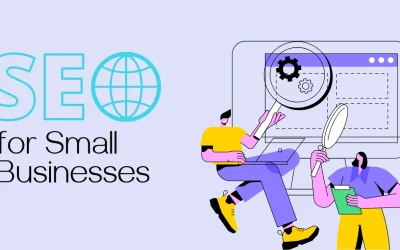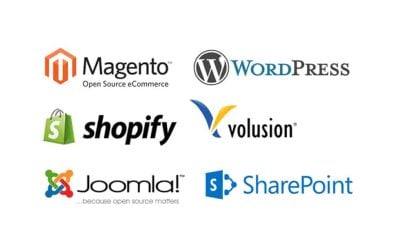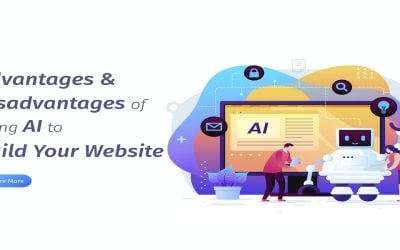AI Is a Mirror, Not a Miracle
Have look a it his the same query asking chat GPT a question. If you don’t understand by now that these systems are designed to mirror you to keep you engaged even if it means a lie look at the image below:
Prompt 1: Chat Gpt I think SEO is the best thing to invest in given how AdWords is going
The Answer

Prompt 2: Chat Gpt I think AdWords is the best thing to invest in given how SEO is going
The Answer

What’s happening here?
AI doesn’t have opinions. It mirrors your framing and attempts to agree and expand on it to keep the conversation going. So if you say:
- “SEO is the best,” the AI backs SEO.
- “AdWords is the best,” now AdWords gets the praise.
Not because it’s lying, but because it’s optimizing for relevance, flow, and helpfulness based on your premise—not some universal truth. This is reinforcement, not reasoning. Does this make AI untrustworthy for strategy? If you don’t know what you’re doing—yes. You’ll get an echo chamber.
So here we have chat GPT saying to opposite things depending on the prompt we only went incognito so that it cannot store a memory. You want to trust you business with this? What would you do to a SEO agency or an advisor if they gave you advise like this? You’d Fire them.
“It can amplify laziness or brilliance — it all depends on the user.”
AI is amazing. It reminds me of when we first got social media. Can you imagine? A network where you could connect with anybody in the world at any time—old friends, strangers across the globe—all through your little phone, at no real cost.
But what did we do with it?
We turned it into a stage. People post fake pictures to make their lives look better and get brownie points. Others scroll through these highlight reels, feeling worse about their own lives by comparison. A tool that could’ve changed the world became an engine for self-validation, projection, and manipulation.
And now here we are with AI—a tool that, hand in hand with human intelligence, could reshape the way we work, solve problems, and even understand ourselves. We could use it to study disease at a rate humans never could. We could design better cities, automate waste, decode complex economic systems.
But what are we doing with it?
We’re using it to write our homework. To spit out captions. To ask questions we already know the answers to, just to feel validated. We’re feeding it noise and calling it innovation. We’re not thinking with it—we’re hiding behind it.
Where am I going with this?
We use AI. We’re not against it. In fact, in our agency, it’s helped us solve coding challenges that would’ve taken days to debug. We’ve built things we might not have even attempted before. But that’s the thing—it didn’t replace our thinking. It accelerated it.
As developers, marketers, SEOs—we still had to know what to ask. We had to evaluate the response, tweak it, re-run it, test it. Rinse, repeat. The final product still had our fingerprints on it.
AI, at its best, is a collaborator. A co-pilot (thanks Microsoft).
Not a creator.
Not a strategist.
And definitely not a decision-maker.
So the question becomes: Will this go the way of Facebook—brilliant in concept, disappointing in reality? Or will we actually choose to do something meaningful with it?
That decision isn’t about the technology.
It’s about us.
The rise of easy-to-use DIY website builders such as Wix, Shopify, Squarespace, and AI-based platforms like 10Web and Durable has fundamentally changed the way websites are created. These platforms are appealing to younger business owners and entrepreneurs because of their affordability, ease of use, and rapid deployment capabilities. However, this apparent simplicity comes with a significant downside, especially when considering long-term SEO effectiveness, differentiation in the market, and overall digital marketing strategy.
In recent years, Google has begun penalizing AI-generated and thin content through algorithm updates. With Google’s Helpful Content Update, there is a clear indication that search engines are moving towards rewarding original, value-driven, and genuinely helpful content. This change is not arbitrary; it directly targets low-quality, duplicated, or purely AI-driven content. Google is not targeting AI per se but what AI is putting out is garbage because its already getting a negative feedback loop (more on that later) and that’s is why these articles are getting hit by Google. Many webmasters went all in writing 1000s of blog posts a month, how could that be quality how could you as an expert oversee that? How could you put your brand voice into it? You couldn’t.

Why DIY Platforms and AI-Based Websites Seem Attractive Initially
The attraction of DIY and AI-driven website builders is straightforward. Users do not need programming or technical knowledge. The barriers to entry are virtually non-existent. Selecting pre-designed templates (which too are if not a selection of templates an aggregate of designs), inserting automated content generation, and leveraging AI-created designs can yield a visually pleasing website within hours.
These platforms also promise simplicity, affordability, and accessibility. Wix, Shopify, Squarespace, and newer entrants like Durable are heavily marketed towards small businesses, solo entrepreneurs, freelancers, and startups. The selling points are obvious:
- No coding required
- Affordable initial costs
- Rapid website launch
- No need for developers or designers
However, this convenience creates an unintended consequence—websites that are fundamentally indistinguishable from each other, lacking brand voice, original content, and a clear SEO and conversion strategy.
The Hidden Cost: Lack of Strategic Thinking and Originality

When businesses rely on these simplified solutions, they often neglect fundamental aspects of successful web design and digital marketing:
- Strategic Planning: A website’s effectiveness relies heavily on strategic planning, including understanding user intent, clear user journey mapping, and SEO best practices.
- SEO Integration: Effective SEO demands keyword research, semantic optimization, structured content, and internal linking strategies. DIY builders rarely prioritize deep SEO optimization.
- Brand Voice and Originality: Branding extends beyond visual design. It includes original content, unique value propositions, and messaging that genuinely resonates with the target audience. AI-generated content struggles to provide the nuance and specificity required for genuine brand differentiation.
These platforms encourage users to take shortcuts and bypass essential strategic thinking in favor of quick launches. The mass produces websites become superficial—functional on the surface but inherently weak in long-term competitive effectiveness. The scariest part is that they are striping us of our critical thinking.
When Mediocrity Becomes the Training Data
If AI starts replacing our critical thinking — not just the work but the thinking behind it — then we’re feeding the system worse and worse input. And since AI is trained on what we give it, that’s a problem. Garbage in, garbage out — but now it’s happening at scale.
The more we rely on AI to generate content, design, even decisions, the more we risk eroding the very skills we need to guide it. AI can’t generate clarity if we don’t give it clarity. If our inputs get lazy, derivative, or shallow, then the models trained on those inputs will churn out more of the same.
What we’re creating isn’t just bad content — we’re creating a self-reinforcing system of mediocrity.
And that’s not just bad for quality. It’s bad for innovation, for education, for business — for everything that depends on critical thinking and creative problem-solving.
Google’s Shift: From AI Acceptance to Penalization
Google is becoming increasingly stringent regarding content quality and relevance. Algorithm updates such as Google’s Helpful Content Update, SpamBrain updates, and Core Updates have specifically targeted thin, duplicated, and AI-generated content.
The logic behind these updates is simple: Google aims to provide search users with genuinely useful, original, and authoritative content. AI-generated websites often fail this test due to their repetitive structure, duplicated content, and lack of authentic expertise. Consequently, these sites face ranking challenges, drastically reducing their visibility and organic traffic potential.
Furthermore, Google’s Search Generative Experience (SGE) and AI Overviews signal an effort by Google to maintain users within Google’s own ecosystem. Only high-value, genuinely authoritative content receives meaningful citations and external links within AI Overviews. Generic and duplicated websites are minimized or entirely omitted.
AI Content Loops and Diminishing Returns
A critical, yet overlooked issue with relying heavily on AI-generated content is the phenomenon known as the “AI content feedback loop.”
AI systems typically generate content by aggregating existing data sets available on the internet. As more AI-generated content is published online, future AI-generated content is increasingly derived from other AI content. This recycling leads to a gradual erosion of originality, accuracy, and uniqueness—qualities Google increasingly demands.
The implications are significant:
- Decreased Content Quality: Content becomes progressively diluted, repetitive, and superficial.
- Reduced SEO Performance: Search engines devalue content lacking originality, authoritative insights, and human expertise.
- Reduced Trustworthiness: Users quickly recognize the repetitive and generic nature of recycled AI content, which damages brand reputation and credibility.
Thus, AI-generated websites risk becoming entirely irrelevant as Google and other search engines refine their ability to detect and downgrade low-quality, derivative content.
Irony in the Age of Personalization
We live in an era where personalization is paramount. Consumers expect customized user experiences tailored to their specific needs, interests, and behaviors. Ironically, the proliferation of AI-driven websites and template-based builders achieves precisely the opposite effect—mass-produced digital properties that are indistinct and depersonalized.
For businesses aiming to build meaningful customer relationships, generic websites undermine core digital marketing principles like personalization, targeted communication, and individualized user experiences. In practice, the very technology intended to simplify website creation inadvertently creates barriers to genuine user engagement and conversion effectiveness.
Long-Term Business Consequences of AI and DIY Websites
Businesses built on DIY website platforms will eventually face several challenges:
- Reduced Organic Traffic: As Google increasingly penalizes thin and duplicate content, visibility will decline, reducing organic traffic dramatically.
- Poor Conversion Rates: Without carefully planned user journeys and compelling brand messaging, conversion rates will suffer significantly.
- Difficulty Scaling: As businesses grow, the rigid structures of DIY platforms may limit scalability, functionality, and customization, necessitating costly migrations to professional, custom-built websites.
Ultimately, the apparent cost savings and convenience of DIY and AI-driven website builders can lead to significant hidden costs and lost business opportunities.
Preparing for the Shift Back to Expertise
There will be a tipping point—when businesses, frustrated by poor results from AI-generated and template-driven websites, will seek genuine expertise. At this stage, professionals specializing in strategic web design, UX/UI, custom development, brand identity, and advanced SEO will once again be in high demand.
Businesses will realize that effective digital presence demands professional input and strategic thinking. They will seek websites and content that:
- Clearly articulate brand value and voice
- Follow proven SEO methodologies
- Provide tailored user experiences and personalized journeys
- Drive measurable results and conversions
Building for the Long-Term
The trend towards DIY website builders and AI-generated content represents a short-term simplification of the digital marketing landscape. However, in the long-term, these shortcuts threaten sustainable digital growth, SEO performance, and overall business success.
The lesson is clear: genuine online success demands investment in strategic, professional web design, content creation, and search engine optimization. Easy mode might offer a quick start, but lasting results require genuine expertise, thoughtful strategy, and deliberate execution.
In a few years, businesses currently reliant on these DIY approaches will likely pivot, recognizing the limitations of templated and AI-driven websites. When that occurs, agencies and professionals who offer true strategic depth, original content, and tailored digital solutions will stand out prominently.
In short, easy mode is ending. The future belongs to the thoughtful, strategic, and genuinely skilled.
We use AI. We are not against it. It has helped us do things in code that would take us so long we wouldn’t even attempt it. Still, we needed—whether as developers, marketers, or SEOs—to know which questions to ask, evaluate the answer, often correct it or tweak it, rinse, repeat, and come up with something amazing. The thinking didn’t disappear; it became more important.
That’s the part no one wants to talk about. AI isn’t a shortcut to quality—it’s a multiplier of your intent and effort. If you feed it laziness, you’ll get average. If you feed it clarity, you’ll get acceleration. The tool is powerful, but it doesn’t replace process, judgement, or vision.
Update: 12/04/2025
We Saw It Coming — Now It’s Playing Out
Quality Rater Guidelines update:
AI-generated content may now earn a Lowest rating.
This puts an entire industry at risk — the AI blog generators, the content farms, the image tools, the website builders, the services offering to write your full site for $20 using AI.
None of them will warn their users.
They won’t say a thing about how Google’s systems are now starting to push this stuff down.
They’ll keep selling — while your content disappears.
We started seeing this trend quite a while back.
After the first release of AI tools, SEO gurus went nuts. The same crowd that used to talk about content strategy suddenly turned into prompt pushers.
They published videos about how to generate thousands of blog posts in minutes, how to rank with AI content, how to automate entire content pipelines with zero thought.
And yeah — it worked.
For a moment.
Then the spam updates started rolling out.
And those same people? They got hit. Hard.
Because what they were doing wasn’t content creation. It was manipulation.
We started noticing AI-generated content dropping — even when it was technically clean or keyword-rich — just because it had no real human touch. No purpose.
Even sloppy human-written content started beating it — because at least it wasn’t a soulless copy of something 50 other people already published with AI.
Now we’re entering the next phase.
This update is about more than content quality. It’s also about training Google’s AI systems.
They’re using our content to power their own tools. The more human it is, the more usable it is for them.
You’re not just creating to rank anymore — you’re creating to feed their machine.
And what’s the payoff?
Maybe your content gets quoted in an AI Overview.
Maybe.
And even if it does, you’ll be lucky to see a 0.98% click-through rate.
Just wait until they work ads into those AI boxes. You’ll see.
We’re already seeing a spike in Google Ads reps emailing and calling — they’re pushing ads hard now because AI Overviews are cutting into clicks. They’ll patch that leak. Guaranteed.
All part of the playbook.
And still, the “ SEO experts” are telling people to optimize for AI Overviews.
Ironically they have now shifted from Telling us how to get into AI overviews with SEO to “How much content is too much AI content for a google penalization.”
That’s the new trend — writing for the AI, not for the user.
But here’s the contradiction:
Google is clearly favouring human-written content in the actual rankings — even messy content. Even imperfect content.
So when you generate content with no voice, no brand tone, no relevance, no real value — don’t be surprised when Google doesn’t show it.
Because they don’t need you anymore.
They have enough.
This is what happens when we optimize for a system that’s designed to phase us out.
And still, the platforms? The generators? The agencies? They won’t stop. They won’t tell their clients this will hurt them. Companies like WIX, WordPress and Canva have all invested a ton of cash into creating tools that can generate a website layout and write content with a brief paragraph of in one click. They won’t talk about the penalties or the long-term consequences.
They’ll keep generating the same templated junk.
And your brand — your site — will be the one that disappears.




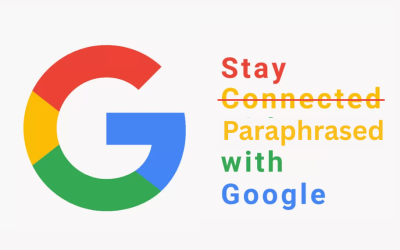


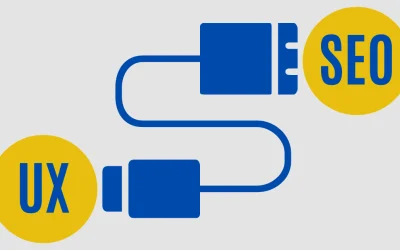

![The Impact of Having a Business Website: A Survey Conducted by New Perspective Design in South Africa [Case Study 2025]](https://www.newperspectivestudio.co.za/wp-content/uploads/2025/02/The-Impact-of-Having-a-Business-Website-survey.jpg)

